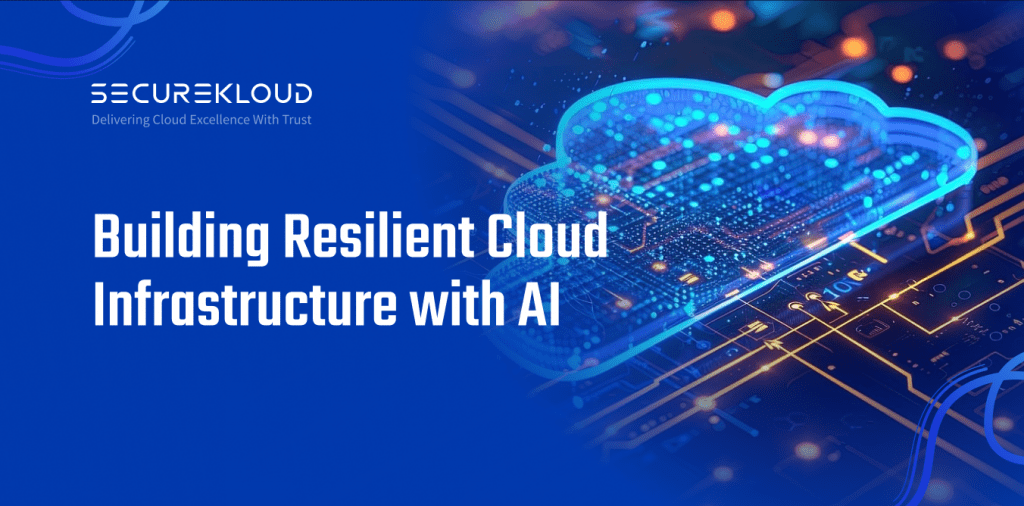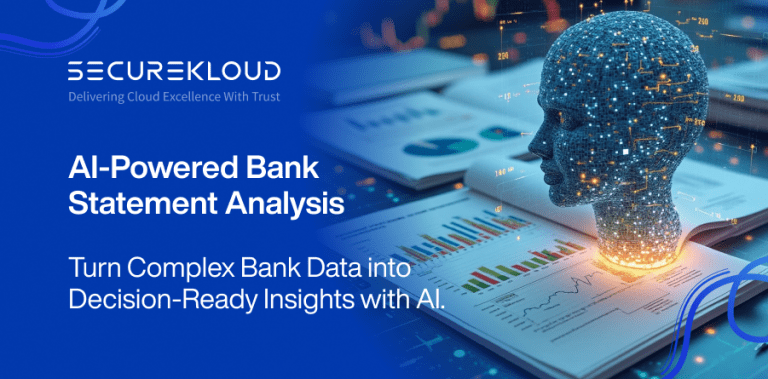- 4Minutes
- 696Words
- 85Views
Building a resilient cloud infrastructure is essential to ensure business continuity, maintain high levels of performance, and minimize downtime. Artificial Intelligence (AI) is proving to be a game-changer in this process, offering powerful tools to enhance AI cloud resilience, predict failures, automate recovery processes, and optimize cloud uptime strategies. In this blog, we’ll explore how AI can help organizations build a more resilient, scalable, and secure cloud infrastructure.
What is Cloud Infrastructure Resilience?
Cloud infrastructure resilience refers to the ability of a cloud environment to maintain continuous, reliable operations even in the event of disruptions. These disruptions could be due to hardware or software failures, cyberattacks, or sudden surges in traffic. A resilient cloud infrastructure ensures that services remain operational, data is protected, and business functions are not interrupted.
AI cloud resilience is the use of artificial intelligence to monitor, predict, and respond to these disruptions proactively. With AI, cloud platforms can anticipate potential failures, minimize downtime, and swiftly recover from incidents, significantly improving overall service reliability.
The Role of AI in Enhancing Cloud Resilience
AI is revolutionizing cloud resilience in several ways, transforming how businesses handle disaster recovery, uptime strategies, and system optimization. Below are some of the most impactful AI applications in building a resilient cloud infrastructure:
- Predictive Maintenance and Failure Prevention: AI can help anticipate issues before they occur by continuously monitoring cloud infrastructure for signs of potential failure. By analyzing vast amounts of data generated by cloud systems, AI algorithms can identify patterns that indicate impending problems, such as hardware degradation, network congestion, or software vulnerabilities.
- Disaster Recovery AI: AI-powered disaster recovery solutions provide faster, more efficient responses to cloud disruptions. These systems can automatically back up data, simulate disaster scenarios, and even execute recovery procedures in real-time, ensuring minimal downtime. By leveraging machine learning algorithms, disaster recovery AI can learn from past incidents to refine and optimize recovery plans, improving recovery times and reducing the risk of data loss.
- Dynamic Resource Allocation and Auto-Scaling: AI enhances cloud uptime strategies by automatically adjusting resources based on real-time demand. With AI’s auto-scaling capabilities, cloud infrastructure can expand or contract based on workload needs, ensuring that sufficient resources are always available without over-provisioning. This helps to maintain cloud performance even during traffic surges while minimizing unnecessary resource consumption during quieter periods.
- Intelligent Security and Threat Detection: AI-driven security systems continuously analyze network traffic, system activity, and user behavior to detect anomalies that could signal a potential security breach. Machine learning models can learn from historical attack patterns, adapt to new threats in real-time, and even predict future vulnerabilities, enabling proactive threat mitigation. This level of intelligence not only improves the overall security posture of cloud environments but also enhances resilience by preventing breaches and minimizing their impact.
- Cloud Uptime Strategies and Monitoring: Maximizing cloud uptime is crucial for businesses that rely on continuous availability for their operations. AI plays a key role in monitoring and maintaining cloud uptime by continuously assessing performance metrics and system health. By aggregating data from various cloud services, AI can identify trends, bottlenecks, and areas of concern that could affect service availability.
Benefits of AI-Driven Cloud Resilience
- Proactive Issue Resolution: AI anticipates problems before they occur, minimizing the risk of downtime and service interruptions.
- Faster Recovery: AI-driven disaster recovery systems enable faster, more efficient responses to disruptions, ensuring continuity.
- Optimized Resource Usage: AI’s auto-scaling and resource optimization capabilities ensure that cloud infrastructure can adapt to varying demands.
- Improved Security: AI’s threat detection and response systems enhance the security of cloud environments, reducing the risk of data breaches.
- Cost Savings: By optimizing resource allocation and minimizing waste, AI-driven solutions help reduce overall cloud expenses.
Building resilient cloud infrastructure is crucial for businesses that rely on the cloud for daily operations. With AI, companies can enhance their cloud uptime strategies, predict and prevent disruptions, streamline disaster recovery, and optimize their cloud resources for efficiency and cost-effectiveness. By leveraging AI cloud resilience, organizations can ensure that their cloud environments remain reliable, secure, and scalable, even in the face of unexpected challenges.



